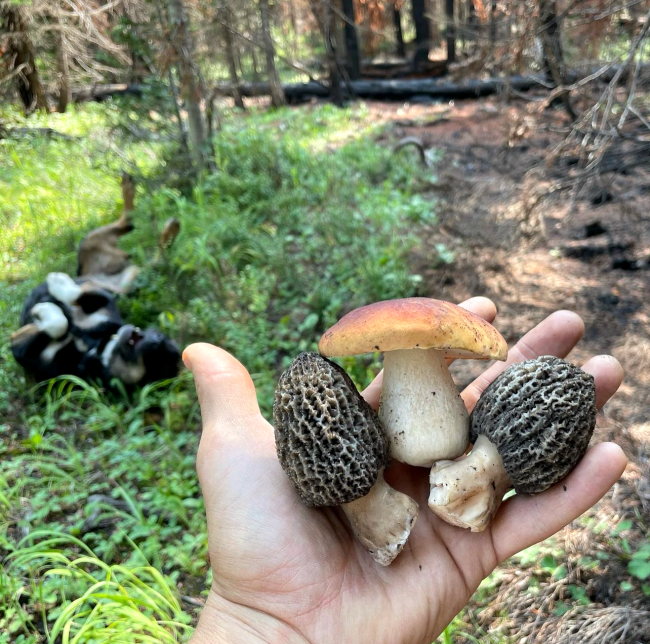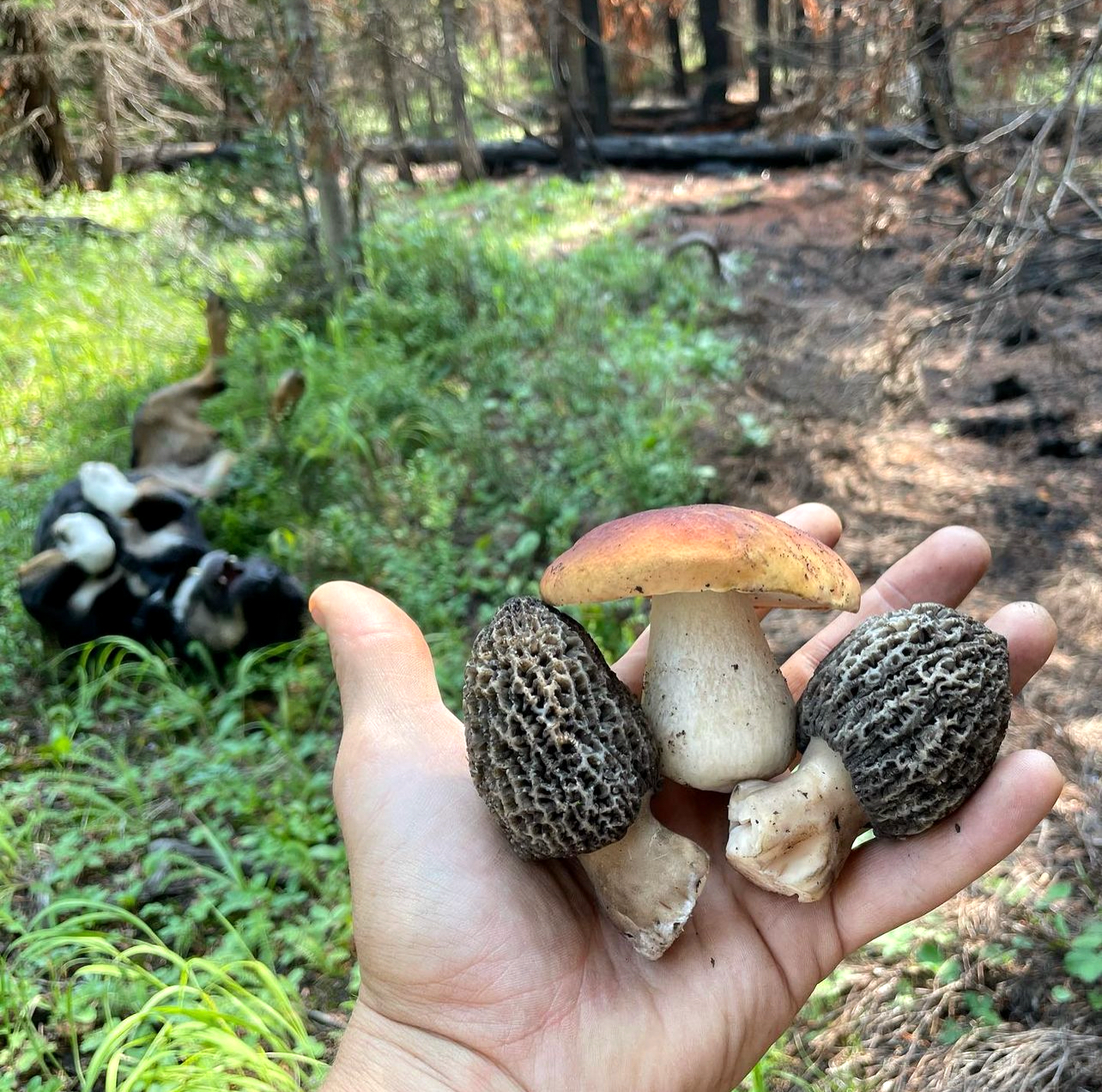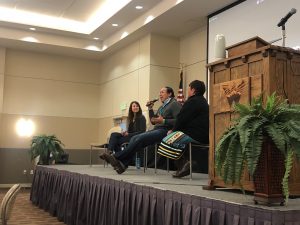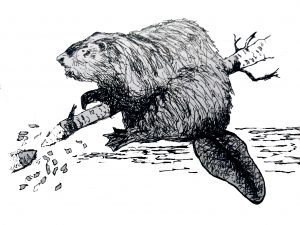
IT’S DIFFICULT TO TURN A CORNER ANYMORE and not see the white and red image of a Fly Agaric mushroom emblazoned on hats, scarves, shirts, earrings and even on the skin as tattoos. The irony is that the Fly Agaric — the red-capped, white-speckled amanita mushroom (Amanita muscaria) of fairy tales, is poisonous. The iconic mushroom has been associated with shamans and the rituals of the Koryak people of northeastern Siberia, who use it to create trance-like lucid-dreaming states. In their rituals, the shamans feed the mushroom to reindeer and then collect the animals’ urine and drink it to induce visions. The urine includes the psychoactive compound but the toxins have been filtered out.
The fly agaric was given its name because housewives would put a piece of it in an open cup of milk, whereupon a fly would land to taste the milk; the poison of the mushroom would then kill the house pest. The cultural phenomenon of this mushroom is also linked to Viking Berserkers, who would consume it prior to battle to minimize their flinch factor. It is also linked to the concept of Santa Claus.
Long before November 2022, when mushrooms were decriminalized in Colorado via a bill that will take effect in 2024, there has been a fascination with mushrooms and fungi throughout society. Even former Denver Bronco quarterback Jake Plummer has tapped into his passion for fungi, starting a mushroom farm in Fort Lupton called MyCOLove. The farm specializes in mushrooms such as turkey tail, reishi, lion’s mane and Cordyceps.
My own love-hate relationship with fungi began as a young child living on the prairie outside of Hartsel — commonly a very dry, dusty prairie of sage. After a strong rain, Giant Western Puffballs would rise up from the earth like snowballs in summer, varying in size from ping-pong ball to basketball. My father harvested and cleaned them before cutting them into steak-like rounds. He then fried them with onions in our old cast-iron skillet on the wood stove. They were disgusting. But, like my being the only left-hander in my family, I was also the only mushroom hater. So I was offered mushrooms often.
As I progressed through life, I really did try eating them every so often; even then, I was able to pick out their spongy texture and musty taste in almost any dish. I did learn that mushrooms are much more like animals than plants and even share around 50% of their DNA with humans. So, when people asked why I didn’t like them, I joked that I didn’t eat them because I wasn’t a cannibal.
However, over 30 years later I discovered I actually do have a fascination with fungi. About two years ago some friends shared that they had watched the documentary Fabulous Fungi at a local theater, and it had literally brought them, along with a large portion of the audience, to tears, truly affecting their thoughts and emotions. I blew it off, assuming that it was a movie about psychoactive effects; mushrooms were for psilocybin or for nutrition, right?
A few months later I finally chose to view the film; it was engaging, fascinating and beautiful — not just the stories and the cinematography, but the vast amount of knowledge, both discovered and undiscovered, around fungi. I was hooked. I immediately purchased multiple books and followed various foragers on social media. Throughout the pandemic, the endorphin lift from seeing a beautiful photo of a chanterelle or morel would make my day. I read Entangled Life by Merlin Sheldrake, a New York Times best-seller about “how fungi make our world, change our minds and shape our future.”
One of the largest organisms on earth is a network of honey fungi in Oregon; it weighs hundreds of tons, covers 10 square kilometers and is estimated to be between 2,000 and 8,000 years old. Sheldrake explains that fungi are “metabolic wizards;” they can break down some of the most stubborn substances on the planet: crude oil, plastics and even TNT.
Currently, fungi are breaking into the news, such as the Cordyceps — nicknamed the zombie mushroom, which will sprout spores inside the body of insects, typically carpenter ants. These ants are then “driven” by the fungi when it grows around the ant’s muscle fiber. It crawls to the top of the jungle canopy. From there, the mushroom will fruit and eventually spread its spores, with the mysterious awareness that its spores will be more widely spread if it is higher in the air. In the past year I have seen the Cordyceps depicted on an ever growing basis, as dozens of tattoos and even more T-shirts and other garb.
Here locally in Colorado, aspen oyster mushrooms have the specialized ability to glow in the dark. However, they don’t glow in the dark every night; instead, they glow only in the darkness of a new moon. In that darkness, insects can’t find it. So the glow of the fruiting body entices insects to crawl across it, picking spores up on their feet and delivering them to widespread places.
Another fan favorite, the Chaga mushroom, contains a fruiting body that is quite small in comparison with its outward appearance. The Chaga’s surface is not actually a fruiting body but rather a mass of mycelium, black in color due to its amount of melanin. The fruiting body is rarely seen since it lives under the bark of the tree, below the mass. Because the spores are only released when the tree is dead, Chagas rarely spread from tree to tree.
My exploration has resulted in an upcoming artistic collaboration with a friend, Josh Vogeler, who is known by his Instagram handle Mushroom Troubadour due to his infamous foraging and musicianship in many bands. He and his dog travel the Midwest and Pacific Northwest states making music, working in a variety of short-term jobs and foraging for mushrooms. We have been friends for over two decades but I had no idea of the depth of his fungi knowledge.
When asked about his fascination, he replied “Fungi fascinate me in so many ways … . Mushrooms have taught me about wild food sources, with a wide range of flavors and health benefits. They have taught me about the interconnectedness of ecosystems and the recycling of organic matter. They have even taught me about my own consciousness, fine-tuned my senses and awakened my sense of spirituality.”
As I learn more and more about fungi, I am struck by how, while we are typically taken in by the beauty of the fruiting body, a larger network of mycelium is too large and interconnected to even fathom. In 1845, Alexander von Humboldt observed that “each step that we make in the more intimate knowledge of nature leads us to the entrance of new labyrinths.“
Is our interest because we know so little? Are we seeking to understand much that is undiscovered? So each time I happen upon someone with a classic red and white mushroom on their sweater, I tell myself that perhaps one fly agaric on someone’s sweater is like one spore, one of billions, being carried throughout the world, hopefully creating more fungi fascination.
Starr Hill was raised off the grid in tipis and old mining cabins between Fairplay, Como, Hartsel and Leadville. Now a teacher, she is raising a family of her own and working on a memoir of lessons she learned growing up off the grid.
Sponsored by PJ and Merrell Bergin.



